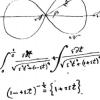Bổ sung (*): Chứng minh rằng $(\overrightarrow{BH},\overrightarrow{CE})\equiv(\overrightarrow{BF},\overrightarrow{CH}) (\text{mod}\,\,2\pi)$.
Gọi $N$ là giao của $AH$ và $BC$. Dựng hình bình hành $ABHS$. Gọi $AH$ cắt $CS$ tại $T$.
 H92.png 43.37K
0 Số lần tải
H92.png 43.37K
0 Số lần tải
Có hai trường hợp cần xem xét.
+ Trường hợp 1: Điểm $F$ thuộc tia đối của tia $AB$ hay $\overline{AF}.\overline{AB}<0$. Khi đó, theo định lí Thales $\frac{\overline{NB}}{\overline{NM}}=\frac{\overline{AB}}{\overline{AF}}<0$. Suy ra $M$ nằm ngoài đoạn $BN$.
Do đó $\overrightarrow{MN}\uparrow\uparrow\overrightarrow{MB}\uparrow\downarrow\overrightarrow{MC}$ hay $\overline{MN}.\overline{MC}<0$.
Lại theo định lí Thales $\frac{\overline{EA}}{\overline{EC}}=\frac{\overline{MN}}{\overline{MC}}<0$, suy ra $E$ thuộc đoạn $CA$.
Từ đó $(\overrightarrow{BH},\overrightarrow{CE}) \equiv (\overrightarrow{BH},\overrightarrow{CA}) \equiv (\overrightarrow{AS},\overrightarrow{CA}) (\text{mod}\,\,2\pi)$ vì $\overrightarrow{CE}\uparrow\uparrow\overrightarrow{CA}$ và $\overrightarrow{BH}\uparrow\uparrow\overrightarrow{AS}$.
Tương tự $(\overrightarrow{BF},\overrightarrow{CH}) \equiv (\overrightarrow{HS},\overrightarrow{CH}) (\text{mod}\,\,2\pi)$.
Ta có $B/AH/S$ do $ABHS$ là một hình bình hành và $B/AH/C$ do $\overrightarrow{BN}\uparrow\uparrow\overrightarrow{BM}\uparrow\uparrow\overrightarrow{BC}$ nên $C,S/AH$.
Giả sử $T$ nằm trong đoạn $CS$, vậy $C/AH/S$ (mâu thuẫn). Suy ra $T$ nằm ngoài đoạn $CS$. Mà $A,H,C,S$ đồng viên do $(HS,HC)\equiv (BA,HC)\equiv(AB,BH)+(BH,AC)+(AC,CH)\equiv(BH,AC)\equiv(AS,AC) (\text{mod}\,\,\pi)$ nên $T$ cũng nằm ngoài đường tròn $(AHCS)$.
Thành thử $T$ nằm ngoài đoạn $AH$, kết hợp $T\in CS$ suy ra $A,H/CS$, kéo theo $(\overrightarrow{AS},\overrightarrow{AC})\uparrow\uparrow(\overrightarrow{HS},\overrightarrow{HC})$. Vì $\vert(\overrightarrow{AS},\overrightarrow{AC})\vert=\angle SAC=\frac{\pi}{2}=\angle SHC=\vert(\overrightarrow{HS},\overrightarrow{HC})\vert$ nên $(\overrightarrow{AS},\overrightarrow{AC})_0=(\overrightarrow{HS},\overrightarrow{HC})_0$ hay $(\overrightarrow{AS},\overrightarrow{AC})\equiv(\overrightarrow{HS},\overrightarrow{HC}) (\text{mod}\,\,2\pi)$.
Ta biến đổi góc \[(\overrightarrow{BH},\overrightarrow{CE})\equiv (\overrightarrow{AS},\overrightarrow{CA})\equiv (\overrightarrow{AS},\overrightarrow{AC})+\pi \equiv (\overrightarrow{HS},\overrightarrow{HC})+\pi \equiv(\overrightarrow{HS},\overrightarrow{CH})+2\pi \equiv (\overrightarrow{HS},\overrightarrow{CH})\equiv (\overrightarrow{BF},\overrightarrow{CH}) (\text{mod}\,\,2\pi)\]
+ Trường hợp 2: Điểm $F$ thuộc tia đối của tia $BA$.
Lập luận tương tự trường hợp 1, ta được:
$(\overrightarrow{BH},\overrightarrow{CE}) \equiv (\overrightarrow{AS},\overrightarrow{CA}) (\text{mod}\,\,2\pi)$
$(\overrightarrow{BF},\overrightarrow{CH}) \equiv (\overrightarrow{SH},\overrightarrow{CH}) (\text{mod}\,\,2\pi)$
$(\overrightarrow{HS},\overrightarrow{HC}) \equiv (\overrightarrow{AC},\overrightarrow{AS}) (\text{mod}\,\,2\pi)$
Gọi $C'$ là điểm đối xứng với $C$ qua $AS$ thì $\overrightarrow{AC'}\uparrow\uparrow\overrightarrow{CA}$ và $(\overrightarrow{AS},\overrightarrow{AC})\equiv -(\overrightarrow{AS},\overrightarrow{AC'}) (\text{mod}\,\,2\pi)$
Ta biến đổi góc \[(\overrightarrow{BF},\overrightarrow{CH})\equiv (\overrightarrow{SH},\overrightarrow{CH})\equiv (\overrightarrow{HS},\overrightarrow{HC}) \equiv (\overrightarrow{AC},\overrightarrow{AS})\equiv -(\overrightarrow{AS},\overrightarrow{AC})\equiv (\overrightarrow{AS},\overrightarrow{AC'})\equiv (\overrightarrow{AS},\overrightarrow{CA})\equiv (\overrightarrow{BH},\overrightarrow{CE}) (\text{mod}\,\,2\pi)\]
Vậy $(\overrightarrow{BH},\overrightarrow{CE})\equiv(\overrightarrow{BF},\overrightarrow{CH}) (\text{mod}\,\,2\pi)$.
- nhungvienkimcuong yêu thích



 Tìm kiếm
Tìm kiếm Nam
Nam










 Gửi bởi
Gửi bởi 

